Check out the latest additions to the Zalk Veterinary Medical Library!
We take requests!
Want the library to purchase a book for your teaching or research? Email Kate.
Your source for what's new at Mizzou Libraries
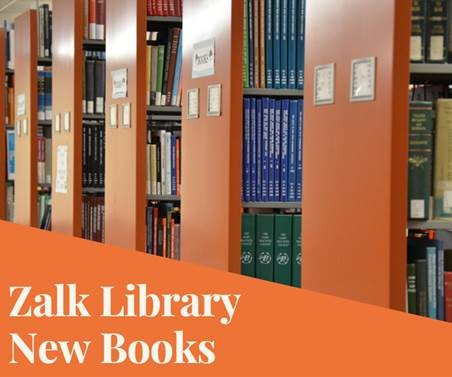
Check out the latest additions to the Zalk Veterinary Medical Library!
We take requests!
Want the library to purchase a book for your teaching or research? Email Kate.
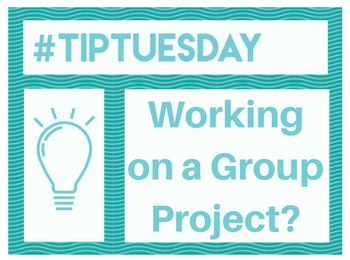
Get the most out of your group study session by reserving a study room in Ellis Library!
Doors or No Doors? On the first floor, we have rooms with doors and no doors for varying needs of privacy.
Film Studios 2E21 and 3E21 are our film studios. These rooms have a green screen wall that you can use to replace the background on video or photography projects.
Larger Rooms Take the elevator to 3R to find these spacious, private rooms. Check the schedule because sometimes these rooms are used for meetings or classroom instruction.
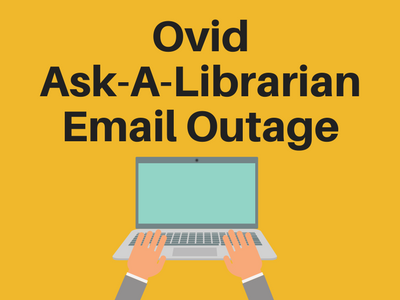
We recently discovered that the Ovid Ask-A-Librarian feature has not been working. Any messages sent through that feature were not being received by the libraries.
We are currently looking into the issue, but in the meantime, have rerouted those submissions to a working email. We apologize for any inconvenience.
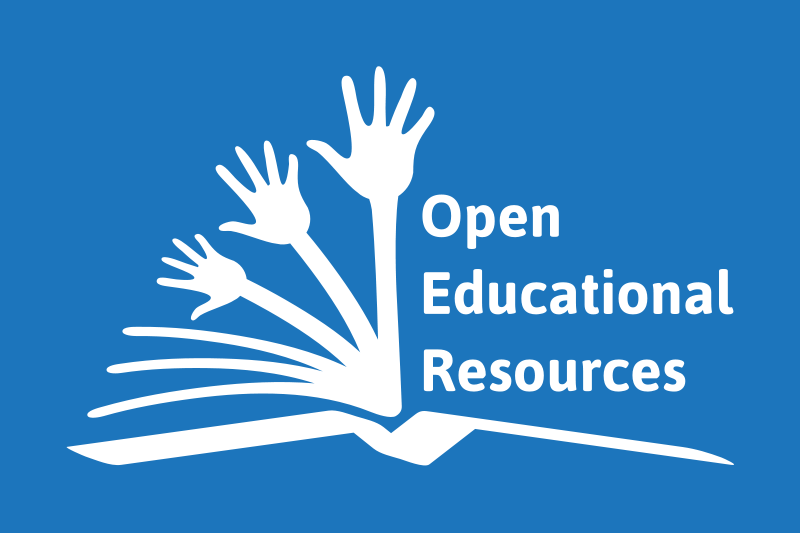
With Dr. Choi’s recent announcement of the University of Missouri System’s recent commitment to adopt OER to reduce the cost of textbooks and course materials, the Health Sciences Library is ready to help our faculty find appropriate resources for their courses.
MedEdPortal is a good starting point for locating open educational materials in medicine and the health sciences. Reach out to Taira Meadowcroft if you are interested in incorporating OER in your courses.
Want more information on OER? Visit the University of Libraries Open Educational Resources site.
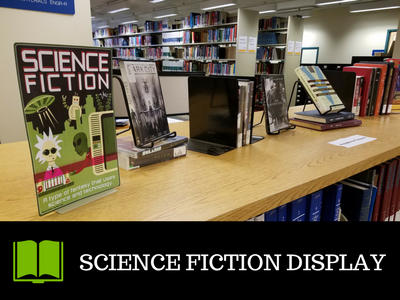
Today’s science fiction is tomorrow’s science fact – Isaac Asimov
We brought over some books from Ellis Library for our new science fiction book display. Curious about what the world would be like if AI’s achieved consciousness or if the people of Mars decided to fight for independence? Stop by our reference section to browse through science fiction classics and films!
All of these titles are available for checkout so grab one or two for the road!
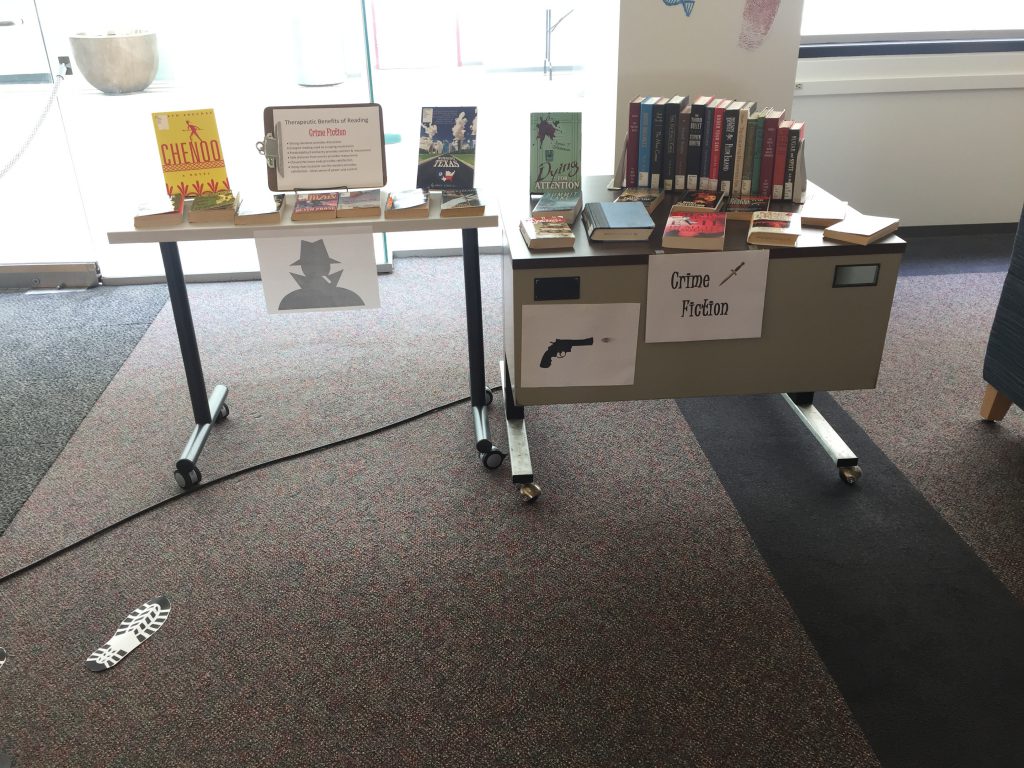
Did you know reading crime fiction can be beneficial? The strong narrative becomes a distraction allowing patients to relate to events from a distance, with power and control over the situation. Check out Natasha Cooper’s story about a new mom whose obstetrician is murdered. Read about an ex-military sniper who becomes enthralled in the Kennedy shooting and unravels a huge conspiracy.
Visit the second floor of the Health Sciences Library to learn more about the health benefits of crime fiction or pick a Halloween read!
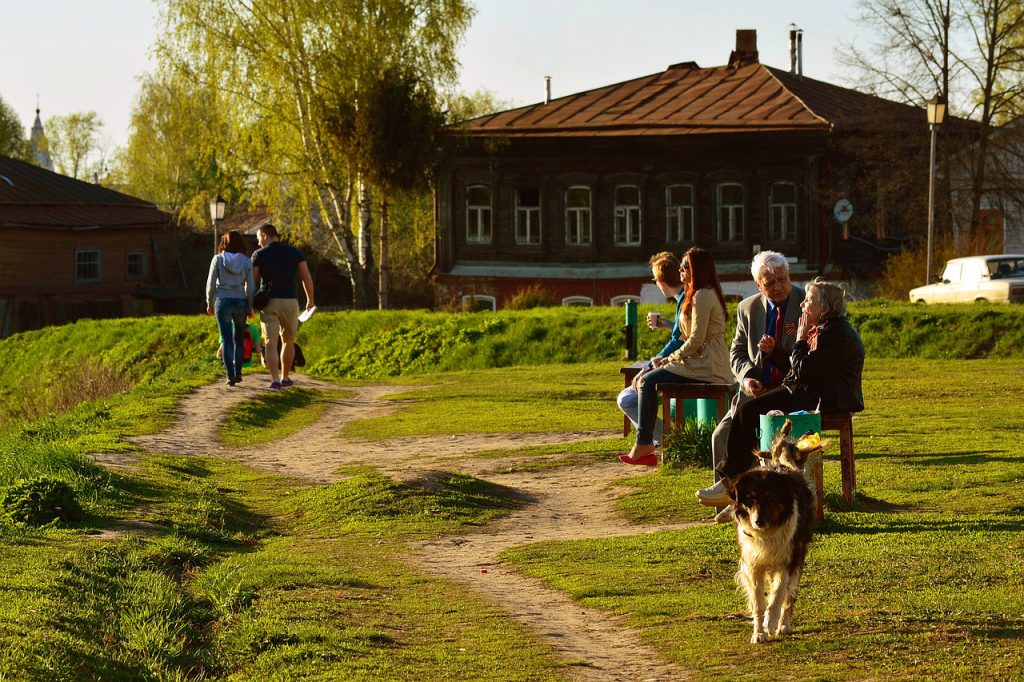
Each month we provide an overview of University of Missouri authored articles in medicine and related fields, and a featured article from a School of Medicine author with the highest journal impact factor.
This month’s featured article, Randomized Trial of Intelligent Sensor System for Early Illness Alerts in Senior Housing, was co-authored by faculty from a number of University of Missouri departments including Nursing, Social Work, Electrical & Computer Engineering, Health Management & Informatics, and Family & Community Medicine. School of Medicine authors include Dr. Richelle Koopman of Family & Community Medicine as well as Dr. Lanis Hicks and Dr. Chelsea Deroche from the Department of Health Management & Informatics. The article was published in Journal of the American Medical Directors Association (impact factor 5.775 in 2016).
See the list of publications in medicine and related fields we retrieved for this month: http://library.muhealth.org/resourcesfor/faculty/faculty-publications/oct2017/
*This list is not intended to be comprehensive.
Did we miss something? Email asklibrary@health.missouri.edu and we will add your publication to the list.
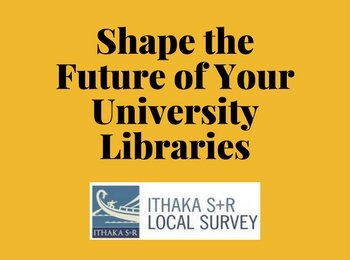
Please help the University Libraries by participating in a survey about the impact of library resources and services on your research, publishing, and teaching practices at MU. Your answers will help the library plan for the right strategy and mix of services to carry forward into the future. Faculty, academic/research staff, and graduate students will receive an email on Monday, October 2, with a link to the survey. The survey will be open until Friday, October 27.
This research study is being conducted by the University of Missouri Libraries in partnership with Ithaka S+R, a non-profit educational research organization. Thanks to this partnership, we will gain a clear picture of library use here at MU and will have the opportunity to compare our situation with other colleges and universities nationally.
Thank you in advance for your time and cooperation. We need to hear from you as we plan for the future.
If you have any comments or questions, please contact us at libsurveys@missouri.edu.
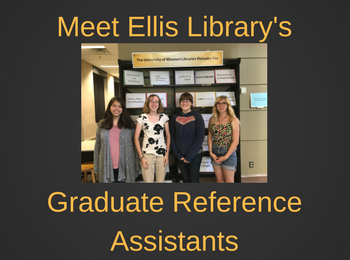
This year, the Research, Access, and Instructional Services Division of Ellis Library is fortunate to have seven graduate assistants providing research assistance at the Reference Desk, leading workshops, and helping with behind-the-scenes projects. Meet a few of them below and find out some of their insider research tips.
Haley Gillilan, originally from Kansas City, studied English and film studies at Ball State University as an undergraduate. Her parents took her the library from a young age, helping instill “a lifelong love for reading, pop culture, and the library.”
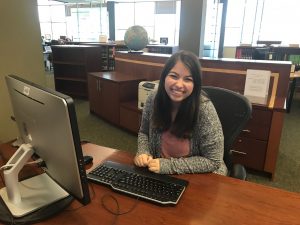
She says, “I started looking into library careers around the time there was a lot of racial unrest and community upheaval in Ferguson, Missouri, and I saw the way that the library took care of people in that community seeking refuge. After that event, I was inspired to look into library school and realized that the profession exemplified a lot of the values that I personally hold.”
Haley enjoys helping people find what they need and is “always happy to make the library a hospitable place.” When anyone isn’t sure where something is located in the library, she recommends using the How do I find? link under Looking For? on the library’s homepage.
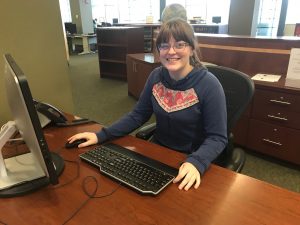
Victoria Knight studied English here at Mizzou, graduating with her bachelor’s in the spring of 2016. What made her want to become a librarian? “The most stereotypical answer, I love to read! I have always been interested in reading and writing, and even in high school I knew I wanted to go into librarianship. However, as I got older and started my career in higher education, I saw the value of information literacy and the importance of our freedom to gather and read whatever we wanted. I thought librarianship would be a great way to combine my interest in literature and my love for freedom of speech and information access.”
She says finding “the exact right source” is most rewarding aspect of working at the reference desk. “It doesn’t matter if it is a book, article, or even the perfect database. When the student starts to realize that we have exactly what they need, that is what makes the job fun! We never know what we are going to be asked, and when we find the perfect source it just makes everyone happy.”
Victoria knows that library research can be intimidating but tells students “they should never spend hours struggling with library sources.” She emphasizes the library’s abundant resources and the reference department that helps students “research smarter, not harder.” She advises, “Don’t stress or be afraid to ask us for help! It’s literally why we are here.”

Erin Niederberger majored in English and minored in history and anthropology right here at Mizzou. Her undergraduate internship at Ellis Library led to her current path. She says, “I hadn’t even thought about librarianship as a career before, but the internship prompted me to find out more.”
Erin appreciates a good challenge, like “when someone has a complicated question, and we’re able to find exactly what they need. Hunting for good books and journal articles can be a fun treasure-hunting experience, but the best part is when you get them what they’re looking for.”
Her favorite piece of library history to share is that “if you stand on the second floor landing and look up the stairs, you can faintly see the outlines of windows that were filled in when additions were built onto the library. This building comes with a lot of history.” Erin’s practical advice is to take a look at the subject guides linked to as Research by subject under Quick Links on the library homepage. These guides “give you a lot of places to start with research.”
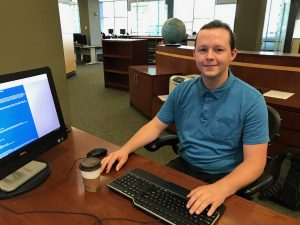
Dylan Thomas Martin studied English literature, pursuing secondary education for a few years before deciding on librarianship, which offers him a “unique mix of teaching, public service, projects, and research.” In addition to his work at Ellis Library, he is “currently working with the Daniel Boone Regional Library to host digitally a collection of a local zine published since 1992.”
As far as his work here at Ellis, Dylan most enjoys “working with diverse students from across the disciplines and helping users arrive at the ‘a-ha!’ moment, so they can walk away from the reference desk a more independent researcher.”
Dylan advises students, “Consider using citation management software like EndNote, Zotero, or Mendeley. It will save you time and help organize your research for posterity.”
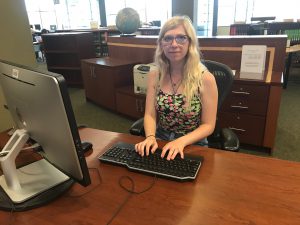
Michelle Zigler majored in English, with an emphasis in creative writing, plus a minor in women’s and gender studies. What made her want to become a librarian? She says her internship with The State Historical Society of Missouri prompted her interest in the profession. She also worked in her high school library.
Michelle likes helping people and finds plenty of opportunity for that at the Reference Desk. “It makes me feel so good inside knowing that I helped give someone else the answer that they needed.”
“I love referring students to Special Collections and Rare Books,” she says of her favorite library tip. Although many students are unaware of what is in their collections, Michelle hooks them with tidbits such as “Their oldest material is around 4,000 years old!”
Save
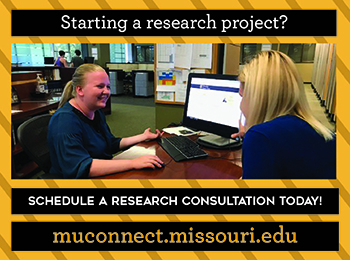
Having a hard time finding resources for a tough paper or big project? Struggling with a literature review? Use Canvas to schedule an appointment via MU Connect and meet with the librarian assigned to your class.
What even is MU Connect, and how do you use it? Watch this short video to find out and make an appointment today.